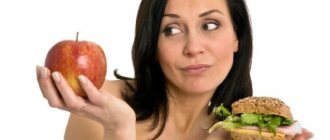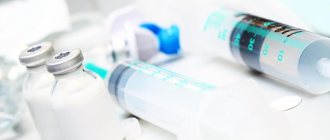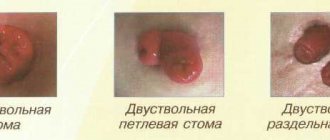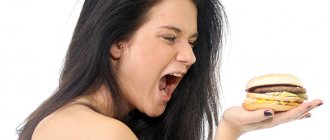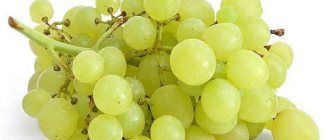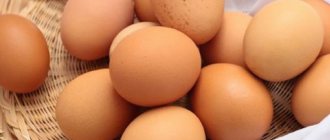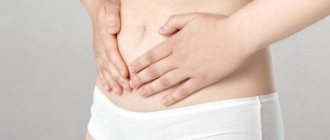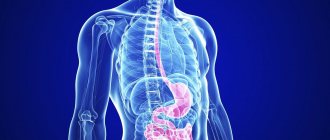Proper nutrition during cancer is the most important component of successful treatment of malignant neoplasms. The main goals of diet therapy are to protect the body from carcinogenic intoxication, increase the activity of antitumor defense factors (antiblastoma resistance system), and replenish the plastic and energy needs of a cancer patient. In addition, “anti-cancer” nutrition plays a primary role in preventing relapses of pathology and accelerating rehabilitation after toxic treatment (chemotherapy or ionizing radiation).
General information about cancer
Content:
- General information about cancer
- Nutrition for cancer
- Basic rules of nutrition for cancer
- Useful tips
- FAQ
- Nutrition for pancreatic cancer
- Nutrition for prostate tumors
- Nutrition for liver cancer
- conclusions
Hundreds of thousands of cancer cells are formed in the human body every day. However, the immune system quickly destroys them, sending special “defender” cells to the tumor site. This process is called apoptosis or planned cell death. However, when the activity of these cells decreases, the immune system is not always able to recognize malignant antigens. As a result of this, some of the mutated cells remain alive and begin to multiply uncontrollably. After two or three divisions, hereditary defective characteristics are fixed in them. After the fourth cycle of reproduction, atypical cells transform into malignant neoplasms (oncogenesis).
Factors that provoke a decrease in natural antitumor protection:
- chemical carcinogens (tobacco combustion products, food saturated with preservatives, industrial waste, synthetic pharmaceuticals);
- biological carcinogens (Epstein-Barr virus, adenoviruses, papillomaviruses, herpesviruses).
- physical carcinogens (radioactive, electromagnetic, ultraviolet, x-ray radiation);
- endogenous carcinogens (toxins and wastes formed as a result of metabolic dysfunctions);
- genetic predisposition (chromosomal defects).
Remember, the main task of nutrition in cancer is not so much to slow down tumor growth as to protect the body from carcinogenic intoxication.
Hygiene is important
Cancer patients are at risk of infection, which can also be caused by food. Since there is no special diet that could protect cancer patients from infection, the main rule for its prevention is strict adherence to hygiene.
Literature sources:
- https://www.oncology.ru/moa/vestnik/558/
- Khomyakov V.M., Ermoshina A.D. Correction of nutritional deficiency in cancer patients using ready-made mixtures for oral nutrition (siping). Research and practice in medicine. 2015; 2(3): 82-88. DOI: 10.17709/2409-2231-2015-2-3-82-88.
- Fundamentals of nutritional support in an oncology clinic / Ed. corresponding member RAMS A.I. Salanova. – Moscow – 2009 – 239 p.
- Nutritional support for cancer. 2022 Society of Supportive Care Specialists in Oncology (RASSC) Clinical Practice Guidelines.
- Guide to Clinical Nutrition / ed. Prof. Lufta V.M. / St. Petersburg, “Art Express”, 2016. – 484 pp., with illustration.
- Sytov A.V., Leiderman I.N., Lomidze S.V. et al. Practical recommendations for nutritional support for cancer patients // Malignant tumors: Practical recommendations RUSSCO #3s2, 2019 (vol. 8). pp. 639–647.
- Clinical guidelines of the National Association of Parenteral and Enteral Nutrition (Russia).
Nutrition for cancer
Considering that the immune system plays a key role in the fight against tumor processes, to improve the condition of a cancer patient, it is extremely important to increase the activity of the anticarcinogenic system.
Other goals pursued by diet therapy for cancer:
- improvement of liver detoxification function;
- acceleration of healthy tissue regeneration;
- normalization of metabolism (including the synthesis of enzymes, hormones, protective antibodies);
- saturating the body with energy and plastic resources;
- acceleration of the removal of toxins and waste;
- maintaining homeostasis (coordinated physiological processes).
Foods with anti-cancer properties:
- Algae (spirulina, chlorella, wakame, kombu, dulse). Contains powerful inhibitors of cancer cell growth - fucoxanthin, fucoidan, phycocyanin.
- Leafy greens (alfalfa, onions, garlic, spinach, celery, parsley, lettuce, cumin, parsnips, carrots, wheat germ, mustard). The pigment composition of green plants is represented by chlorophyll, which is a natural source of organic iron. This substance prevents damage to the genetic material of the cell, neutralizes the effect of food carcinogens, stimulates the production of enzymes and protective antibodies, improves the rheological parameters of the blood, accelerates phagocytosis (the process of absorption of foreign agents), and has an anti-inflammatory effect on the digestive tract. In addition, leafy greens contain large amounts of essential nutrients (vitamins, minerals and amino acids).
- Fruits and vegetables of orange, red and yellow colors (lemons, tomatoes, pumpkin, carrots, grapefruits, apricots, peaches, plums, apples, tangerines, beets). The products contain strong antioxidants (lycopene, beta-carotene, ellagic acid, lutein, quercetin), which increase the body's natural antitumor defense, neutralize oxidative stress, and protect body cells from ultraviolet radiation.
- Cruciferous vegetables (white sprouts, cauliflower and Brussels sprouts, broccoli, radishes, kohlrabi, turnips). They contain powerful antitumor elements (indole, glucosinolate), which reduce the rate of germination of new blood vessels in “cancerous” lesions, initiate the self-destruction of malignant cells, and increase the detoxification function of the liver.
- Bee products (honey, propolis, beebread, pollen, royal jelly). This food has antitumor, antioxidant, immunomodulatory, anti-inflammatory, antitoxic, analgesic and regenerating effects on the body.
- Wild berries (cherries, cranberries, blackberries, blueberries, raspberries, wild strawberries, mulberries, strawberries, currants, cherries). The peels of medicinal products contain many antioxidants and angiogenic inhibitor substances that prevent the development of metastases, absorb free radicals, reduce inflammatory processes in tissues, and neutralize the effects of exogenous toxins. In addition, wild berries are rich in ellagic acid, which counteracts the binding of carcinogenic toxins to cell DNA, stimulates the encapsulation of tumor tissue, and initiates apoptosis (death) of malignant tumors.
- Green beans (lentils, peas, soybeans, chickpeas, asparagus). They contain a large number of protease inhibitors (trypsin and chymotrypsin), which slow down the division of atypical cells (due to the production of highly active anti-cancer enzymes) and accelerate the elimination of toxic substances (after the use of cytostatic agents and radiation therapy). In addition, beans supply the body with high-quality protein - a “building material” for muscle tissue.
- Fruit seeds and nuts (walnuts, flax, almonds, sesame, sunflower, pumpkin). These products contain lignans, which have an estrogen-like effect on the body (regulate the production of sex hormones). With a lack of these substances, the susceptibility of cells to genetic mutations increases, and dangerous enzymes that activate tumorigenesis in the mammary gland accumulate. Along with this, nuts and seeds contain a large amount of protein structures, vitamins, minerals and fatty acids.
- Japanese and Chinese mushrooms (cordyceps, shiitake, maitake, reishi, which contain the polysaccharide beta-glucan). They have powerful immunostimulating and antitumor effects on an exhausted body. At the same time, mushrooms “freeze” foci of malignant tumors, slow down the spread of metastases, and neutralize tumor decay products.
- Green tea. Includes healing catechin (epigallocatechin gallate), which suppresses angiogenesis in the foci of the tumor process and inhibits the development of metastases.
In addition, to suppress the malignant process, it is advisable to include aromatic herbs (turmeric, rosemary, mint, cumin, basil, thyme, marjoram, cloves, anise, cinnamon) in the daily menu.
Carcinogenic products prohibited for cancer:
- rich broths from meat, poultry or fish;
- margarine;
- white sugar;
- whole milk;
- canned food, pickles, marinades:
- offal, semi-finished products, sausages;
- smoked, pickled, spicy, fatty dishes;
- baked goods, confectionery;
- sweet carbonated drinks;
- frozen food;
- packaged juices;
- processed cheese;
- store-bought mayonnaise;
- heated fats;
- potatoes (after December);
- premium flour;
- vinegar;
- baker's yeast;
- soda;
- packaged alcohol.
Tips for troubleshooting common problems
This section provides recommendations for dietary changes to help correct common problems. You do not need to adhere to them if you do not experience the problems listed.
If certain foods caused discomfort before surgery, they will also cause discomfort after surgery.
Diarrhea
Diarrhea is loose or watery stools, more frequent bowel movements than usual, or a combination of the two. Diarrhea can be caused by:
- certain products;
- Skipping meals
- food poisoning;
- the presence of infection in the intestines;
- antibiotics (medicines to treat infections) and other prescription drugs;
- intestinal blockage.
For diarrhea, follow these guidelines:
- Contact your doctor. You may be given medicine to help relieve your condition.
- Drink 8 to 10 8-ounce (240 ml) glasses of fluid (about 2 liters) per day. Whenever possible, drink sports drinks (such as Gatorade or Powerade) and oral rehydration solution (such as Pedialyte®). These drinks will help you prevent dehydration.
- If you don't have these drinks, you can make your own with the following ingredients: 4 cups (32 ounces, which is about 1 liter) water;
- 1 cup (8 oz (240 ml)) orange juice;
- 8 teaspoons (40 milliliters) sugar;
- 1 teaspoon (4 milliliters) salt.
Place all ingredients in a container with a lid. Shake thoroughly to dissolve the sugar and salt.
- Avoid the following foods and drinks. They can cause diarrhea. Bran Broccoli Brussels sprouts White cabbage Caffeinated drinks, especially hot drinks Chocolate Corn Foods containing artificial sweeteners (such as mannitol, sorbitol and xylitol) Fried meats, fish and poultry Fruit juice (such as plum, apple, grape and orange) Green leafy vegetables High-fat foods
Foods that can cause diarrhea Spirits (such as beer and wine) - Foods High in Sugar
- Legumes (such as cooked or dried beans)
- Licorice
- Milk and dairy products with lactose if you are lactose intolerant
- Nuts and seeds
- Peas
- Spicy food
- Stone fruits (such as apricots, peaches, plums and prunes)
- Canned fruit or dried fruit without sugar
- Tomatoes
- turnip leaves
- Whole grains (such as whole wheat bread)
- Eat more of the foods below. Because of them, the stool may become denser. Bananas Pearl barley * Boiled white rice Cheese Creamy nut butter (such as peanut butter) Marshmallow
Foods that can make stools harder Applesauce - Oat groats*
- Pasta
- Potatoes without skin
- Pretzels
- Saltine crackers
- Tapioca
- White bread
- Yogurt
*These are whole grain products. You can consume them for diarrhea as they can help make stools firmer.
Constipation
Constipation is defined as having bowel movements less than 3 times a week, hard stools, difficulty having bowel movements, or all 3. Constipation can be caused by:
- taking certain pain medications;
- taking certain anti-nausea medications;
- consuming insufficient fiber;
- lack of sufficient physical activity;
- insufficient fluid intake.
If you are constipated, follow these guidelines:
- Contact your doctor. You may be given medicine to help relieve your condition.
- Drink hot water with lemon or lemon juice, coffee or prune juice.
- If possible, do light exercise (such as walking).
- Ask your doctor if eating high-fiber foods or taking fiber supplements will help you.
Gas formation and odor
During the first few weeks after surgery, gases will accumulate in the ostomy bag and there will be an unpleasant odor when it is opened; this is a common occurrence. If you have had robotic surgery, you may produce more gas.
If you have problems with gas or odor, tell your nurse/dentist. You can also follow the recommendations below.
- Refrain from the following. This may cause gas. Chewing gum
- Drinking drinks through a straw
- Smoking or chewing tobacco
- Eating too quickly
- Skipping meals
- Ask your healthcare provider if you can take an over-the-counter medicine (such as Beano® or simethicone) before meals to help prevent gas.
- Eat less of the foods below. They can cause gas, an unpleasant odor, or both. Alcoholic drinks, especially beer Broccoli Brussels sprouts White cabbage Carbonated drinks (such as soda water) Cauliflower Corn Dried beans and peas Eggs
Products that may cause gas, odor, or both - Asparagus
- Fish
- Garlic
- Grape
- Leek
- Milk and dairy products with lactose if you are lactose intolerant
- Onion
- Peanut
- Prunes
- Eat more of the foods below. They can prevent gas, odor, or both. Cranberry juiceKefir
Products that can prevent gas, odor, or both - Buttermilk
- Parsley
- Yogurt
to come back to the beginning
Basic rules of nutrition for cancer
When drawing up an “anti-cancer” nutritional plan, it is important to take into account the location of the tumor process, the stage of its development, the nature of the course, the patient’s condition, the list of concomitant diseases, and the nuances of the prescribed therapy. For example, after operations on the gastrointestinal tract, especially when part of the intestine and/or stomach is removed, the absorption of nutrients from food deteriorates, which is why food should be easily digestible and highly nutritious.
With liver cancer, in 80% of cases, swelling of the parenchyma occurs, “pressing” on the adjacent areas of the stomach and making it difficult for food to move into the intestines. In this case, diet therapy should be aimed at improving the secretory function of the gastrointestinal tract (reducing flatulence, feeling of heaviness, pain) and enhancing the detoxification functions of the affected organ. However, before drawing up an “anti-cancer” menu (for all types of pathology), it is important to calculate the number of kilocalories consumed by the patient. As a rule, the energy value of their diet does not exceed 600–800 kilocalories (due to loss of appetite and rapid satiety). Due to the low calorie content of the food menu, in 90% of cases, normal metabolism is disrupted, and a person rapidly loses weight.
To maintain a stable weight, it is important for the patient to consume at least 30 kilocalories per kilogram of body weight. If you need to gain weight, the energy value of the diet is increased to 40 kilocalories. In addition, when selecting food products, the optimal ratio of food components is taken into account: carbohydrates - 55%, fats - 30%, proteins - 15%.
General nutritional requirements:
- Chew food thoroughly. This will help improve the absorption of nutrients in the digestive tract.
- Eat small meals. The optimal frequency of meals is 6 – 7 times a day.
- Consume food in small portions. To avoid bloating and defecation disorders, eat no more than 200 grams of food at one time.
- Eat only freshly prepared food. The maximum shelf life of food in the refrigerator is 12 hours.
- During resection of the digestive tract, consume food only in softly ground form.
- Maintain drinking regime. To speed up the elimination of toxic substances, you should drink at least 2 liters of still water per day (for kidney cancer, the daily volume of liquid is agreed upon with the oncologist). In case of vomiting or diarrhea, the daily portion of water is increased to 3 liters.
- Use gentle methods of heat treatment of food (boiling, baking, steaming). This will help “unload” the liver, since frying releases a huge amount of carcinogens.
- Eliminate too hot and cold foods from your diet.
Remember, after surgery on the stomach or intestines, fruits are consumed only in the form of compote and jelly, and vegetables in the form of puree.
How to deal with dry mouth
Dry mouth interferes with eating and leads to the development of tooth decay. To combat dry mouth, avoid using alcohol-based mouth rinses. Rinse your mouth with a solution of salt and soda every 4 hours. It is prepared according to this recipe: dissolve 1 teaspoon of soda and salt in 0.5 liters of water.
If you have a dry mouth, it is better to give preference to soft and juicy foods: they are easier to swallow. Examples of such products:
- pasta;
- fried eggs;
- fruits with soft texture;
- cottage cheese;
- porridge;
- soup;
- mashed potatoes.
Heartier foods should add more sauce or gravy. The bread can be dipped in coffee or milk. Any food can be washed down with water if it is poorly wetted by saliva.
Useful tips
- For nausea (especially in the morning, without getting out of bed), eat several slices of toast, bread or biscuits.
- To eliminate irritating odors (food, household, cosmetic), ventilate the room more often.
- To increase the body's antioxidant protection, add garlic, onions and fresh herbs to food (to improve appetite).
- When the mucous lining of the digestive tract is inflamed, it is important to avoid overly sweet, bitter and sour foods. To reduce the irritating effect on the digestive tract, fruit, vegetable and berry juices are diluted half with clean water, or jelly is prepared. Along with this, limit the intake of foods that cause increased secretion of gastric secretions.
- If there is difficulty swallowing or chewing, preference is given to soft foods: soups, boiled porridges, grated vegetables, chopped fruits and berries. If necessary, use baby food.
- In case of diarrhea, limit the intake of fresh fruits, vegetables, and salads, which cause a laxative effect. At the same time, strengthening products are introduced into the daily menu: unsweetened crackers, bread, potatoes, cottage cheese, flaxseed, rice. To reduce bloating, use decoctions of dill, fennel, and chamomile.
- To stimulate the evacuation function of the intestines, the patient’s diet is enriched with fiber (fruits, vegetables, herbs, berries, cereals, seeds, nuts). Along with this, to eliminate constipation, drink 700 - 900 milliliters of pure filtered water before breakfast (within 1.5 hours).
- If salivation is impaired (as a result of radiation therapy), preference is given to pureed and liquid foods (herbal and fermented milk drinks, soft chopped vegetables, slimy porridges). In addition, chewing gum, sour fruits or candies are used to enhance the secretion of the salivary glands.
How to deal with nausea and vomiting
Some of the most common side effects of chemotherapy include nausea and vomiting. Drugs are used to reduce them. Additionally, you can use dietary recommendations to cope with the problem:
- eat often, but little by little;
- in case of vomiting, drink plenty of water to compensate for the fluid deficiency;
- do not eat fatty foods;
- avoid sugar, spices, foods with a strong smell;
- eat dry, tasteless, uniform consistency: porridge, crackers, fruit jelly;
- eat food cold;
- drink cold water or juice with meals;
- don't overeat;
- Avoid physical activity after meals.
FAQ
Do sweets speed up the growth of cancer?
Currently, there are many “anti-cancer” diets that exclude sucrose from the daily menu (based on the hypothesis that the tumor “feeds” on sweets). It is true that abnormal cells consume glucose during the process of dividing. However, this process is also typical for other structures of the body (brain, liver). If you completely abstain from sweet foods, cancer cells will still “satisfy” their energy hunger (due to the consumption of carbohydrates found in the muscles).
To date, there is no scientific evidence that people with a sweet tooth accelerate the growth and development of the tumor process.
Can you drink wine if you have cancer?
Yes. Periodic consumption of small portions of wine will not affect the growth and location of the tumor. The exception is the day of the chemotherapy session and the next day, since the organs affected by the toxic procedure have not yet recovered. Additional stress on the liver is also not recommended.
Does calcium food help cope with bone metastases?
No. Metastatic tumors of bone tissue arise as a result of the development of a malignant process in the primary organ (mainly the prostate or mammary gland). Therefore, diet therapy for cancer should be, first of all, aimed at removing the malignant focus and reducing carcinogenic intoxication of the body. In addition, at advanced stages of the pathology, total vascular calcification may be present (a strong increase in the concentration of a macroelement in the blood). In such cases, taking the nutrient is contraindicated.
Is it possible to consume milk and cream if you have cancer?
No, because regular consumption of whole milk products increases the risk of cancer by 30% (due to increased levels of insulin-like growth factor). This is evidenced by the results of two studies conducted by a group of scientists from Harvard University and the medical company Kaiser Permanente.
Does beet juice really help with cancer? How to drink it correctly?
Red beet juice inhibits tumor growth, reduces pain, normalizes hemoglobin and ESR, and increases the oxidation of cancer cells (5-10 times). The healing drink is effective for oncology of any type (especially for cancer of the bladder, stomach, rectum, lungs).
Basic rules for taking the “drug”:
- After preparation, the freshly squeezed juice is placed in the refrigerator for 2 hours (to volatilize harmful substances).
- “Juice therapy” begins with small portions (5 milliliters after each meal), gradually increasing the dose to the daily volume (500 – 600 milliliters). If you drink the daily portion in 1-2 doses, nausea, hiccups, pulse irregularities, surges in blood pressure, and pain in the epigastric region occur.
- Beetroot juice is taken 100 milliliters 5 times a day 30 minutes before meals.
- Before consumption, the juice is slightly heated (to a temperature of 36 degrees).
The duration of beet therapy is 1 year.
General recommendations
The most important nutrients for those being treated for cancer and receiving chemotherapy:
Water . During chemotherapy there should be a lot of it. You don't have to drink only water. Drink any drinks you like: juice, milk, tea, etc.
Protein . This is especially necessary for those who have already undergone surgery to remove a tumor. It will ensure normal wound healing. We need protein as a plastic material. These are the “bricks” from which the body is built. Proteins are found in meat, milk, fish, eggs. There is a lot of plant protein in legumes, seeds and nuts.
Vitamins and minerals . Their intake is ensured by sufficient and varied nutrition. You can take dietary supplements or multivitamins from the pharmacy.
Usually, during chemotherapy, food is consumed often, but little by little. It must be high in calories to avoid weight loss.
During treatment, regular (every week) assessment of the following indicators is necessary:
- body mass;
- level of albumin and total protein in the blood;
- hemoglobin level;
- number of lymphocytes.
Nutritional features depend on what side effects of chemotherapy develop as a result of the administration of drugs. Below we provide recommendations for adjusting the diet, depending on the prevailing symptoms.
Our expert in this field:
Moiseev Alexey Andreevich
Oncologist, chemotherapist, Ph.D.
Candidate of Medical Sciences
Experience: More than 19 years
Call the doctor
Call the doctor
Send documents by email The possibility of treatment will be reviewed by the chief physician of the clinic.
Nutrition for pancreatic cancer
For pancreatic cancer, the daily menu should consist of boiled, baked and steamed foods. To reduce the load on the organ, food (porridge, vegetables and seafood) is ground through a sieve before consumption. If, as a result of treatment, the pancreas affected by the tumor was removed, then insulin therapy is mandatory. An individual menu, in this case, is compiled together with an endocrinologist, taking into account the consumed bread units. Below is a menu for pancreatic oncology at the stage of preoperative chemotherapy or in cases where surgery is not possible.
Sample diet for a week
Monday
Breakfast: 150 milliliters of burdock and rosehip infusion.
Lunch: 100 grams of baked pumpkin, 50 grams of oat biscuits.
Lunch: 100 grams of carrot-zucchini puree, 100 grams of pureed buckwheat porridge.
Afternoon snack: 150 grams of protein omelette (steamed).
Dinner: 50 grams of curd pudding, 200 milliliters of green tea.
Tuesday
Breakfast: 150 milliliters of rosehip infusion.
Lunch: 150 grams of grated rice porridge, 100 milliliters of apple compote.
Lunch: 100 grams of mashed potato soup; 70 grams of boiled zucchini, 50 grams of baked apples.
Afternoon snack: 100 grams of fish steak (steam), 100 milliliters of pear compote.
Dinner: 100 grams of baked pears, 100 milliliters of burdock decoction.
Wednesday
Breakfast: 150 milliliters of rosehip and burdock infusion.
Lunch: 100 grams of liquid oatmeal, 20 grams of toast.
Lunch: 100 grams of vegetable casserole or stew, 70 grams of boiled turkey, 50 grams of baked pumpkin.
Afternoon snack: 70 grams of non-sour cottage cheese (grated), 50 grams of baked apples.
Dinner: 150 milliliters of chamomile-rosehip decoction.
Thursday
Breakfast: 150 milliliters of rosehip infusion.
Lunch: 100 grams of green buckwheat, 100 milliliters of burdock tea.
Lunch: 100 grams of carrot-rice puree, 100 grams of fish cutlets (steamed).
Afternoon snack: 150 grams of fruit jelly.
Dinner: 150 milliliters of non-acidic kefir.
Friday
Breakfast: 100 milliliters of burdock decoction.
Lunch: 100 grams of slimy oatmeal, 20 grams of whole grain toast.
Lunch: 100 grams of carrot-beet puree, 70 grams of boiled veal.
Afternoon snack: 150 grams of protein omelet.
Dinner: 150 milliliters of rosehip infusion.
Saturday
Breakfast: 150 milliliters of rosehip infusion.
Lunch: 100 grams of slimy rice porridge, 20 grams of steamed raisins.
Lunch: 100 grams of beetroot and zucchini puree, 100 grams of fish meatballs (steamed).
Afternoon snack: 150 grams of fruit casserole (pumpkin, apple, pear).
Dinner: 150 milliliters of burdock infusion.
Sunday
Breakfast: 150 milliliters of rosehip infusion.
Lunch: 100 grams of pumpkin-rice porridge, 30 grams of oatmeal cookies.
Lunch: 100 grams of carrot and kohlrabi puree soup, 70 grams of chicken meat.
Afternoon snack: 150 grams of assorted cabbage (baked).
Dinner: 150 milliliters of non-acidic kefir.
This diet eases the load on the organ and improves the patient’s condition.
How to cope with a taste disorder
The following problems may arise during chemotherapy:
- decreased sense of taste - food seems tasteless;
- change in the taste of food - food seems not the same as it was before;
- the appearance of various tastes in the mouth, most often bitter or metallic.
To eat regularly and get enough calories, you need to enjoy food. It is difficult to obtain if the food is bitter or tasteless. The following recommendations will help improve the situation:
- Use plenty of herbs and spices.
- Experiment with food textures.
- Add sauces.
- Marinate the meat if it seems bitter.
- Use more onions and garlic.
- Eat more sour and tart foods, add lemon juice to your dishes.
If there is a constant bitterness in your mouth, you can suck on lozenges or rinse your mouth periodically.
Nutrition for prostate tumors
To alleviate the condition of prostate cancer (especially after surgery), it is important to adhere to the menu below.
Monday
Breakfast: 250 milliliters of grapefruit-orange juice (freshly squeezed).
Lunch: 200 grams of fruit and millet porridge, 50 grams of oatmeal cookies.
Lunch: 150 grams of lentil puree soup, 100 grams of carrot-garlic salad, 70 grams of fish meatballs, 20 milliliters of flaxseed oil.
Afternoon snack: 100 grams of baked beans in tomato.
Dinner: 100 grams of any berries, 50 grams of any cheese.
Tuesday
Breakfast: 150 milliliters of carrot-beet juice (freshly squeezed).
Lunch: 100 grams of cottage cheese, 20 grams of natural honey, 15 grams of sesame seeds.
Lunch: 150 grams of barley or buckwheat porridge, 70 grams of boiled chicken, 100 grams of cabbage salad.
Afternoon snack: 150 grams of baked eggplants with tomatoes.
Dinner: 100 grams of yogurt (homemade), 50 grams of dried fruits (dates, dried apricots, raisins).
Wednesday
Breakfast: 100 grams of seasonal fruits or berries.
Lunch: 70 grams of oatmeal cookies, 20 milliliters of honey, 20 grams of assorted nuts (walnuts, hazelnuts, almonds).
Lunch: 150 grams of tomato soup, 100 grams of chopped vegetables, 70 grams of jacket potatoes, 15 milliliters of olive oil.
Afternoon snack: 100 grams of vinaigrette.
Dinner: 100 grams of carrot-beet juice.
Thursday
Breakfast: 150 milliliters of apple and pumpkin juice.
Lunch: 100 grams of avocado salad, 50 grams of fresh carrots.
Lunch: 150 grams of pureed rice soup, 70 grams of meatballs, 100 grams of tomato.
Afternoon snack: 150 grams of prune and beet salad, 15 milligrams of flaxseed oil.
Dinner: 100 grams of assorted nuts, 100 milliliters of cranberry juice.
Friday
Breakfast: 100 grams of any berry juice (freshly squeezed), 50 grams of dried apricots.
Lunch: 150 grams of cottage cheese, 50 grams of seasonal fruit.
Lunch: 150 grams of carrot and cabbage puree, 100 grams of chopped vegetables, 70 grams of fish cutlets, 15 milliliters of flaxseed oil.
Afternoon snack: 200 milliliters of green tea, 70 grams of oatmeal cookies.
Dinner: 100 grams of kefir.
Saturday
Breakfast: 150 milliliters of beetroot-orange juice, 100 grams of nuts.
Lunch: 150 grams of cottage cheese casserole. 150 milliliters of green tea.
Lunch: 150 grams of pea soup, 70 grams of avocado and lemon salad, 10 milliliters of flaxseed oil.
Afternoon snack: 100 grams of yogurt, 20 grams of flower honey.
Dinner: 200 milliliters of herbal decoction.
Sunday
Breakfast: 150 milliliters of apple and grapefruit juice.
Lunch: 100 grams of seasonal fruits or berries, 20 grams of almonds.
Lunch: 150 grams of stuffed peppers, 100 grams of leafy green salad, 15 milliliters of flaxseed oil.
Afternoon snack: 200 milliliters of burdock decoction, 50 grams of biscuits.
Dinner: 150 grams of cottage cheese casserole.
In addition, to increase natural antitumor protection, the menu of a cancer patient is enriched with beetroot juice (on an ongoing basis).
Nutrition after radiation therapy
Side effects from radiotherapy may appear immediately or may have long-term consequences. Therefore, it is recommended to adhere to a diet for a long time. The restrictions are observed especially strictly during the first 2-3 weeks after completion of therapy.
Gradually increase the proportion of meat in the diet, while avoiding red meats (pork, beef, lamb). Preferably chicken, rabbit or turkey meat. Gradually introduce more fiber: pumpkin, beetroot, and squash dishes. Vegetable-based soups and all kinds of greens are allowed.
After undergoing radiation therapy, the following nutritional principles are observed:
- when introducing a new product, follow the rule of gradualness;
- refuse a new dish if nausea, diarrhea, etc. appear;
- It is undesirable to eat fast food and food with preservatives;
- in the absence of appetite, infusions of peppermint, coriander, ginger, cinnamon, and fennel are used.
During radiotherapy and for some time after its completion, patients lose weight. By following a diet and following doctor's instructions, you can quickly restore normal weight. If difficulties arise in choosing a diet, you can always contact oncology doctors for advice. Doctors will help adjust the diet to the individual characteristics of the patient, and, if necessary, introduce special concentrated nutrition into the diet in doses.
Nutrition for liver cancer
Diet therapy for liver cancer is aimed at restoring the functional activity of the organ and reducing the toxic load on it.
Sample diet for 7 days
Monday
Breakfast: 150 milliliters of apple and carrot juice.
Lunch: 100 g yoghurt, 50 g assorted nuts.
Lunch: 150 g lean fish soup, 100 g vegetable stew, 50 g chicken fillet.
Afternoon snack: 100 g of seasonal fruits or vegetables.
Dinner: 200 milliliters of herbal tea (melissa, linden, chamomile), 100 g of apple charlotte.
Tuesday
Breakfast: 150 milliliters of beetroot-orange juice.
Lunch: 100 g dumplings with cottage cheese (steamed), 50 g seasonal berries.
Lunch: 150 g cabbage rolls with buckwheat porridge, 50 g leafy greens, 100 g fish (boiled or baked).
Afternoon snack: 150 milliliters of burdock tea, 50 g of dried rye bread, 50 g of Adyghe cheese.
Dinner: 150 milliliters of yogurt.
Wednesday
Breakfast: 100 milliliters of pumpkin-beet juice.
Lunch: 100 g oatmeal, 50 g banana.
Lunch: 150 g of pea soup, 100 g of cabbage salad, 20 milliliters of flaxseed oil.
Afternoon snack: 150 milliliters of fruit smoothie, 50 grams of nuts.
Dinner: 100 g apple-pumpkin casserole, 200 milliliters of herbal decoction (burdock, lemon balm, linden), 20 milliliters of honey.
Thursday
Breakfast: 100 milliliters of infusion of rose hips, burdock and linden.
Lunch: 150 g of baked vegetables (zucchini, carrots, beets).
Lunch: 150 g whole grain (dark) pasta, 70 g leafy greens, 30 ml natural sauce (10 ml camelina oil, 5 ml lime juice, 15 ml homemade yogurt).
Afternoon snack: 50 g dried rye toast, 50 g pickled cheese.
Dinner: 100 g of baked fruits (apples, pears), 50 g of raisins.
Friday
Breakfast: 150 milliliters of rose hip decoction.
Lunch: 150 g of curd and berry smoothie.
Lunch: 150 g homemade cabbage rolls, 100 g tomatoes, 50 g greens.
Afternoon snack: 150 g of seasonal fruits (grapes, strawberries, apples, avocados).
Dinner: 200 milliliters of green tea, 30 g of wheat-rye bread, 30 milliliters of natural honey.
Saturday
Breakfast: 150 milliliters of pumpkin-apple juice with pulp.
Lunch: 150 g dumplings with cabbage and buckwheat.
Lunch: 100 g vinaigrette, 70 g chicken meatballs (steam), 20 g flaxseed oil.
Afternoon snack: 100 g apple-pumpkin pie, 20 milliliters honey, 150 milliliters chamomile tea.
Dinner: 150 milliliters of yogurt (homemade), 50 grams of nuts.
Sunday
Breakfast: 150 milliliters of carrot-grapefruit juice.
Lunch: 100 g cocoa with spices.
Lunch: 150 g of cabbage, 100 g of leafy green salad, 50 g of veal meatballs, 20 milliliters of cedar oil.
Afternoon snack: 100 g of cheesecakes (steamed), 150 milliliters of linden tea.
Dinner: 150 milliliters of kefir.
Authorized Products
- All vegetables and fruits consumed should not contain nitrates, which are a carcinogenic factor. The diet can include (as tolerated): lettuce, cauliflower, broccoli, cucumbers, eggplant, potatoes, tomatoes, carrots, zucchini, pumpkin, beets, lettuce, ginger, legumes, Jerusalem artichoke, garlic (in reasonable quantities), greens in soups. Vegetables are first consumed boiled and chopped, and gradually raw ones are included.
- Fruits and berries: watermelon, apples, avocados, dates, kiwi, raspberries, grapefruits, oranges, tangerines, strawberries, currants. Fruits are allowed to be consumed when they are ripe, first without the peel, and later, if well tolerated, with the peel. The amount of raw fruits and berries is increased to 200 g or more per day.
- Whole grain bread, bran bread, bran, flax seed, nuts, seeds, apricot kernels.
- Dietary meat (chicken and turkey - limited) in the form of cutlets or pieces - steamed or boiled, baking is allowed. However, preference is given to fish and seafood, since these proteins are easier to digest and absorb. Seaweed should be included in your diet every day.
- Beef liver and poultry liver.
- Soups with a weak broth, preferably vegetable. They should contain well-cooked cereals and finely chopped vegetables.
- Crumbly porridges are introduced (millet and pearl barley are excluded). Preference is given to brown rice (be careful, it can cause constipation) and buckwheat. They can be cooked in water, weak broth or with milk (cream). You can make pancakes, puddings, and casseroles from cereals.
- Fermented milk products and freshly prepared cottage cheese - daily, and milk and sour cream as an additive to dishes.
- A variety of unrefined vegetable oils (carefully taking into account the laxative effect).
- One or two eggs a day (omelet and soft-boiled).
- You can drink green tea, freshly squeezed juices diluted with water (add carefully, exclude beetroot, cabbage and grape).
Table of permitted products
| Proteins, g | Fats, g | Carbohydrates, g | Calories, kcal | |
Vegetables and greens | ||||
| vegetables legumes | 9,1 | 1,6 | 27,0 | 168 |
| zucchini | 0,6 | 0,3 | 4,6 | 24 |
| broccoli | 3,0 | 0,4 | 5,2 | 28 |
| cauliflower | 2,5 | 0,3 | 5,4 | 30 |
| potato | 2,0 | 0,4 | 18,1 | 80 |
| carrot | 1,3 | 0,1 | 6,9 | 32 |
| cucumbers | 0,8 | 0,1 | 2,8 | 15 |
| parsley | 3,7 | 0,4 | 7,6 | 47 |
| beet | 1,5 | 0,1 | 8,8 | 40 |
| dill | 2,5 | 0,5 | 6,3 | 38 |
| green beans | 2,8 | 0,4 | 8,4 | 47 |
Fruits | ||||
| oranges | 0,9 | 0,2 | 8,1 | 36 |
| pears | 0,4 | 0,3 | 10,9 | 42 |
| tangerines | 0,8 | 0,2 | 7,5 | 33 |
| apples | 0,4 | 0,4 | 9,8 | 47 |
Nuts and dried fruits | ||||
| dried pears | 2,3 | 0,6 | 62,6 | 249 |
Cereals and porridges | ||||
| buckwheat (kernel) | 12,6 | 3,3 | 62,1 | 313 |
| semolina | 10,3 | 1,0 | 73,3 | 328 |
| oat groats | 12,3 | 6,1 | 59,5 | 342 |
| cereals | 11,9 | 7,2 | 69,3 | 366 |
| Wheat groats | 11,5 | 1,3 | 62,0 | 316 |
| wheat bran | 15,1 | 3,8 | 53,6 | 296 |
| brown rice | 7,4 | 1,8 | 72,9 | 337 |
| brown rice | 6,3 | 4,4 | 65,1 | 331 |
| barley grits | 10,4 | 1,3 | 66,3 | 324 |
Bakery products | ||||
| vysivkovy bread | 9,0 | 2,2 | 36,0 | 217 |
| Old Russian grain bread | 9,6 | 2,7 | 47,1 | 252 |
| Rye bread | 6,6 | 1,2 | 34,2 | 165 |
| doctor's bread | 8,2 | 2,6 | 46,3 | 242 |
| whole grain bread | 10,1 | 2,3 | 57,1 | 295 |
Dairy | ||||
| skim milk | 2,0 | 0,1 | 4,8 | 31 |
| sour cream | 2,8 | 20,0 | 3,2 | 206 |
| acidophilus | 2,8 | 3,2 | 3,8 | 57 |
Cheeses and cottage cheese | ||||
| cheese | 24,1 | 29,5 | 0,3 | 363 |
| cottage cheese | 17,2 | 5,0 | 1,8 | 121 |
Meat products | ||||
| boiled beef | 25,8 | 16,8 | 0,0 | 254 |
| boiled veal | 30,7 | 0,9 | 0,0 | 131 |
| rabbit | 21,0 | 8,0 | 0,0 | 156 |
Bird | ||||
| boiled chicken | 25,2 | 7,4 | 0,0 | 170 |
| turkey | 19,2 | 0,7 | 0,0 | 84 |
Fish and seafood | ||||
| Red caviar | 32,0 | 15,0 | 0,0 | 263 |
| black caviar | 28,0 | 9,7 | 0,0 | 203 |
Oils and fats | ||||
| vegetable oil | 0,0 | 99,0 | 0,0 | 899 |
| butter | 0,5 | 82,5 | 0,8 | 748 |
Non-alcoholic drinks | ||||
| mineral water | 0,0 | 0,0 | 0,0 | — |
| green tea | 0,0 | 0,0 | 0,0 | — |
Juices and compotes | ||||
| Orange juice | 0,9 | 0,2 | 8,1 | 36 |
| Cherry juice | 0,7 | 0,0 | 10,2 | 47 |
| Strawberry juice | 0,6 | 0,4 | 7,0 | 31 |
| tangerine juice | 0,8 | 0,3 | 8,1 | 36 |
| carrot juice | 1,1 | 0,1 | 6,4 | 28 |
| tomato juice | 1,1 | 0,2 | 3,8 | 21 |
| pumpkin juice | 0,0 | 0,0 | 9,0 | 38 |
| Apple juice | 0,4 | 0,4 | 9,8 | 42 |
| * data is per 100 g of product | ||||
Fully or partially limited products
- Non-perishable products with chemical additives.
- Animal fats, margarine, cooking fats, butter, mayonnaise.
- Fried food.
- Products made from refined flour, baked goods, pastries, cakes.
- Products with chemical stabilizers, emulsifiers, dyes and sweeteners, which are highly oncogenic substances.
- Fatty meats and red meats.
- All canned food, sauces, marinades, pickles, smoked meats and sausages, since these products contain dyes, stabilizers and promote the growth of tumor cells.
- Strong coffee, tea, chocolate. Avoid the consumption of sugar and simple carbohydrates, which stimulate the growth of cancer cells and accelerate the process of metastasis.
Table of prohibited products
| Proteins, g | Fats, g | Carbohydrates, g | Calories, kcal | |
Vegetables and greens | ||||
| swede | 1,2 | 0,1 | 7,7 | 37 |
| parsnip | 1,4 | 0,5 | 9,2 | 47 |
| parsley (root) | 1,5 | 0,6 | 10,1 | 49 |
| radish | 1,2 | 0,1 | 3,4 | 19 |
| white radish | 1,4 | 0,0 | 4,1 | 21 |
| turnip | 1,5 | 0,1 | 6,2 | 30 |
| celery | 0,9 | 0,1 | 2,1 | 12 |
| horseradish | 3,2 | 0,4 | 10,5 | 56 |
| garlic | 6,5 | 0,5 | 29,9 | 143 |
| spinach | 2,9 | 0,3 | 2,0 | 22 |
| sorrel | 1,5 | 0,3 | 2,9 | 19 |
Fruits | ||||
| bananas | 1,5 | 0,2 | 21,8 | 95 |
| melon | 0,6 | 0,3 | 7,4 | 33 |
Berries | ||||
| grape | 0,6 | 0,2 | 16,8 | 65 |
Mushrooms | ||||
| mushrooms | 3,5 | 2,0 | 2,5 | 30 |
Nuts and dried fruits | ||||
| dried fruits | 2,3 | 0,6 | 68,2 | 286 |
Cereals and porridges | ||||
| pearl barley | 9,3 | 1,1 | 73,7 | 320 |
| millet cereal | 11,5 | 3,3 | 69,3 | 348 |
Flour and pasta | ||||
| pasta | 10,4 | 1,1 | 69,7 | 337 |
| noodles | 12,0 | 3,7 | 60,1 | 322 |
Confectionery | ||||
| candies | 4,3 | 19,8 | 67,5 | 453 |
| pastry cream | 0,2 | 26,0 | 16,5 | 300 |
| Kurabye cookies | 6,7 | 25,8 | 64,6 | 516 |
| butter cookies | 10,4 | 5,2 | 76,8 | 458 |
Ice cream | ||||
| ice cream | 3,7 | 6,9 | 22,1 | 189 |
Cakes | ||||
| cake | 4,4 | 23,4 | 45,2 | 407 |
Raw materials and seasonings | ||||
| seasonings | 7,0 | 1,9 | 26,0 | 149 |
| mustard | 5,7 | 6,4 | 22,0 | 162 |
Meat products | ||||
| pork | 16,0 | 21,6 | 0,0 | 259 |
Sausages | ||||
| dry-cured sausage | 24,1 | 38,3 | 1,0 | 455 |
Bird | ||||
| duck | 16,5 | 61,2 | 0,0 | 346 |
| goose | 16,1 | 33,3 | 0,0 | 364 |
Fish and seafood | ||||
| dried fish | 17,5 | 4,6 | 0,0 | 139 |
| smoked fish | 26,8 | 9,9 | 0,0 | 196 |
| canned fish | 17,5 | 2,0 | 0,0 | 88 |
Oils and fats | ||||
| animal fat | 0,0 | 99,7 | 0,0 | 897 |
| cooking fat | 0,0 | 99,7 | 0,0 | 897 |
Non-alcoholic drinks | ||||
| bread kvass | 0,2 | 0,0 | 5,2 | 27 |
Juices and compotes | ||||
| apricot juice | 0,9 | 0,1 | 9,0 | 38 |
| grape juice | 0,3 | 0,0 | 14,0 | 54 |
| plum juice | 0,8 | 0,0 | 9,6 | 39 |
| * data is per 100 g of product | ||||

